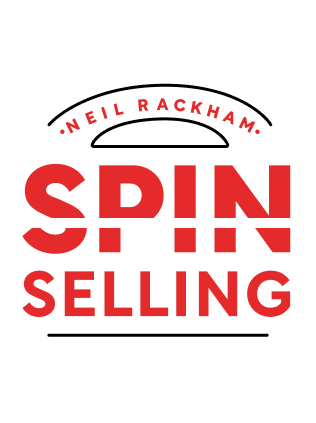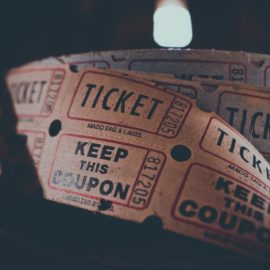

This article is an excerpt from the Shortform summary of "Spin Selling" by Neil Rackham. Shortform has the world's best summaries of books you should be reading.
Like this article? Sign up for a free trial here .
Are you using the SPIN selling method, and need an amazing SPIN selling cheat sheet?
Look no further. This SPIN selling cheat sheet gives an overview of the SPIN selling system and offers a step by step approach on implementing it in real life. This SPIN selling cheat sheet can help you put your new SPIN selling strategy into action.
The SPIN Cheat Sheet: The Approach
Huthwaite researchers found that successful reps in large sales spend the most time on the investigating stage and handle it differently from the traditional approach.
In traditional sales, reps emphasize product features and use standard techniques to address objections and close a sale. In contrast, successful reps ignore traditional techniques and instead focus on asking four different types of questions in a certain order, the SPIN sequence. This SPIN selling cheat sheet shows you how to use this process:
1) S-Situation questions: Start by asking fact-finding and background questions, such as, “What do you see as the company’s biggest growth opportunities?” Asking too many of these questions can impose on the customer’s time and patience, so use them judiciously.
2) P-Problem questions: Once you understand the customer’s situation, ask questions that explore problems or issues your product or solution can solve—for instance, “Are you concerned about meeting your clients’ quality standards with your aging equipment?” Less experienced reps don’t ask enough of these questions.
3) I-Implication questions: Asking good situation and problem questions may be enough to win a small, uncomplicated sale. However, you need to go further in large sales and ask more sophisticated questions that explore the implications or ramifications of a customer’s problem—for example, “How will this affect your fourth-quarter results?” or “What will this mean for your biggest customer?” The point is to underscore a problem’s significance, and create an urgency to address it. These are more difficult questions to frame, even for experienced salespeople.
4) N-Need-payoff questions: These questions lead the customer to articulate the benefits of your product or solution. For example, you might ask, “How useful would it be if we could increase your output by 10%?” or “How would being able to reduce errors help you?” When the customer links the value of solving a problem with the capabilities of your product, he’s more inclined to accept your product as the best solution. Need-payoff questions contribute strongly to success in large sales.
Understanding and Developing Customer Needs
In sales, a need is defined as a want or problem identified by the customer that the seller can address. Salespeople discover, develop, and address customer needs by using SPIN questions in the investigating stage of a call. This requires both questioning skills and an understanding of how customer needs develop. You can use the SPIN selling cheat sheet to understand how it works.
Customer needs develop differently in small and large sales, and they require different sales approaches to gain commitment.
In a small sale, asking one or two problem questions that highlight a need may be enough to motivate the customer to buy a relatively inexpensive item immediately. However, a customer’s perceived need for a bigger-ticket purchase takes much longer to develop. A sales rep uncovers and “develops” the need by exploring and enlarging a customer problem that her product will address, and creating an urgency to address it.
Implied and Explicit Needs
There are two types of needs: implied and explicit. In small versus large sales, they play out differently.
- Implied needs are problems and frustrations expressed by the customer—for instance, “I’m not happy with the quality our press is producing,” or “Our system creates too much waste.”
- Explicit needs are strong wants or desires expressed by the customer—for example, “We need a more efficient system,” or “We have to cut our procurement costs.”
In small sales, implied needs can result in sales success without further development into explicit needs. In fact, the more implied needs a rep can uncover, the greater the chances of making a sale.
But in large sales, the relationship between implied needs (customer problems) and making a sale is weaker. The number of implied needs you uncover has no bearing on sales call results.
In a large sale, implied needs are a starting point requiring further development into explicit needs.
The Value Equation
Don’t worry about discerning between implied and explicit needs when you have the SPIN selling cheat sheet to guide you. Implied needs don’t predict success in major sales because customers make buying decisions based on a value equation, in which they weigh the seriousness of their problem against the cost of the solution.
When the solution doesn’t cost much, weaker needs can tip the scale toward buying. But when the solution is expensive, the buyer must feel a much stronger need in order to be motivated to buy. She asks herself: is the problem big enough to warrant paying this much?
In a major sale, you have to build the implied need into a bigger and more urgent need—an explicit need—so that the size of the problem, as well as the risk the customer is taking, justifies the cost of your solution.
The four question areas of the SPIN strategy—Situation, Problem, Implications, and Need-payoff—develop and convert a customer’s implied needs into explicit needs in a large sale.
Situation questions are intended to gather facts and background information about the customer’s situation. They’re the first questions asked during a sales call. Problem questions are intended to reveal implied needs. They ask customers what their problems and frustrations are.
The most important questions in this conversion process are the implication and need-payoff questions.
Four Steps for Using the SPIN Selling Cheat Sheet
You can reference the SPIN selling cheat sheet for these anytime. Here are four steps for translating the SPIN ideas and techniques into practice:
1) Focus Your Planning on the Investigating Stage
When sales reps plan calls, they tend to focus on what they will tell the customer about the product (the demonstrating value phase), instead of the questions they should ask. But it’s critical to first develop the customer’s needs by asking questions, so that she wants the value your product can deliver. Investigating is the most important selling skill.
2) Develop and Practice Questions in the SPIN Sequence
Start with the easier situation and problem questions first. When you have a handle on them, move on to the more difficult types of questions.
- Determine whether you’re asking enough questions to begin with. If you’re spending most of the call talking about features, scale back and start asking situation questions instead. Do this until asking questions feels as natural as talking about features.
- Plan and ask problem questions. Plan and ask at least a half-dozen problem questions on each call (focus on quantity, not quality).
- Plan and practice implication questions. Once you’ve mastered the skill of uncovering problems, start planning and asking implication questions. This may require a few months’ practice.
- Plan and ask need-payoff questions: Rather than presenting benefits, focus on asking questions that get the customer to tell you how your solution will benefit him—for instance, ask, “What do you see as the pluses of this?”, and “How would that help?”
3) Think of Your Product as a Problem-Solver
Rather than focusing on your product or service’s features and advantages, think of the ways it solves customer problems. Write down the problems the product is intended to solve, then use the list to plan your SPIN qu’estions.
4) Plan, Implement, and Review
Planning your sales call and acting on your plan help to embed new skills in your mind. But you learn even better by reviewing and analyzing your calls afterward to see what you can do better the next time.
Some helpful questions to ask yourself are:
- Did I accomplish what I intended to in the call?
- What would I do differently if I could do the call over?
- What have I learned that I can use to improve future calls with this customer?
- What have I learned that I can use in all of my calls?
Don’t settle for just forming an overall impression of how a call went. Delve into the details—for instance, consider which questions had the greatest effect. Only understanding the details will help you improve your future performance.
You can reference this SPIN selling cheat sheet when you need a quick reference on the steps or SPIN questions. Feel free to access this SPIN selling cheat sheet whenever you need it as you grow more confident in your sales strategy.

———End of Preview———
Like what you just read? Read the rest of the world's best summary of Neil Rackham's "Spin Selling" at Shortform .
Here's what you'll find in our full Spin Selling summary :
- What the SPIN in SPIN Selling stands for
- How to demonstrate real value to the person you're selling to
- How to get commitment from your customer to close the sale fast






